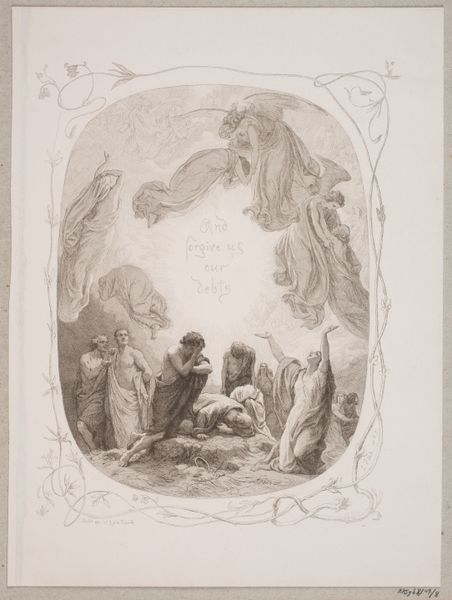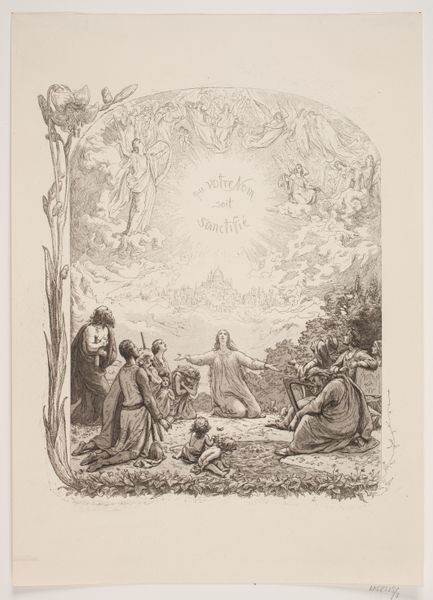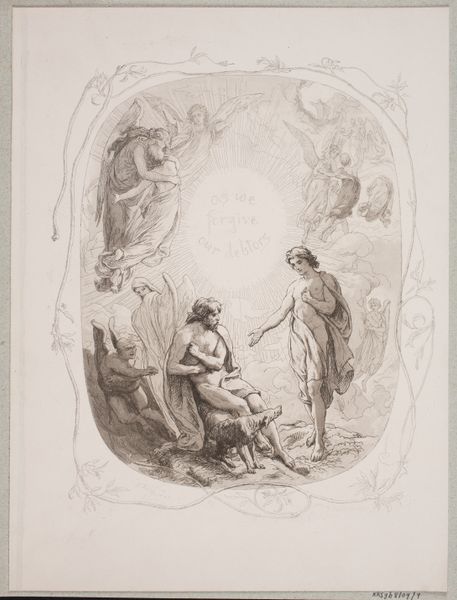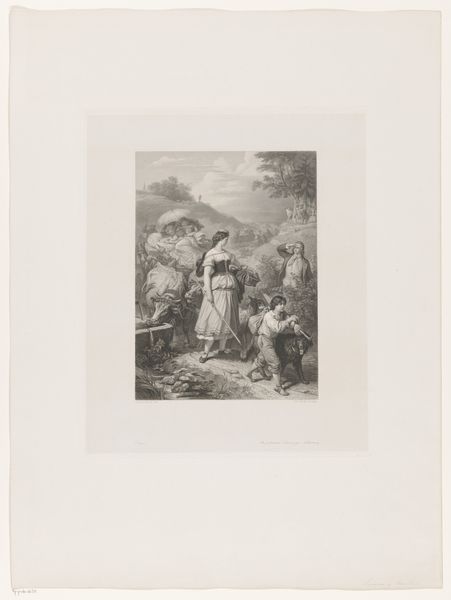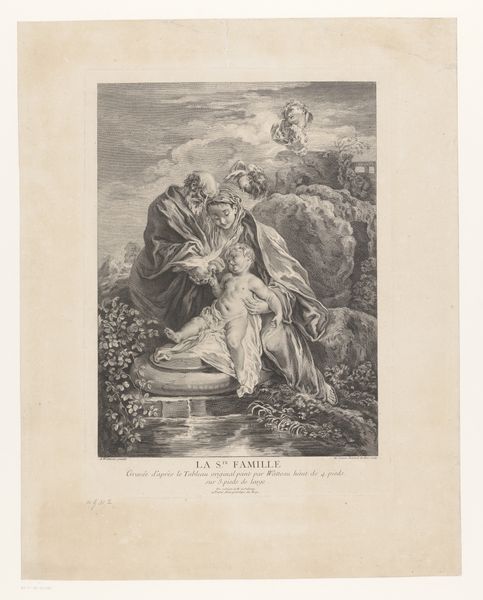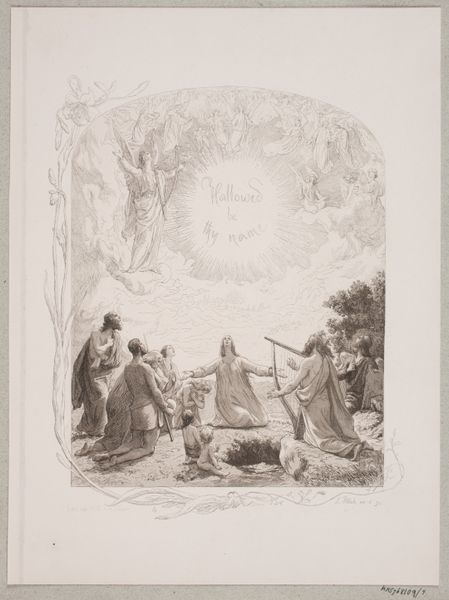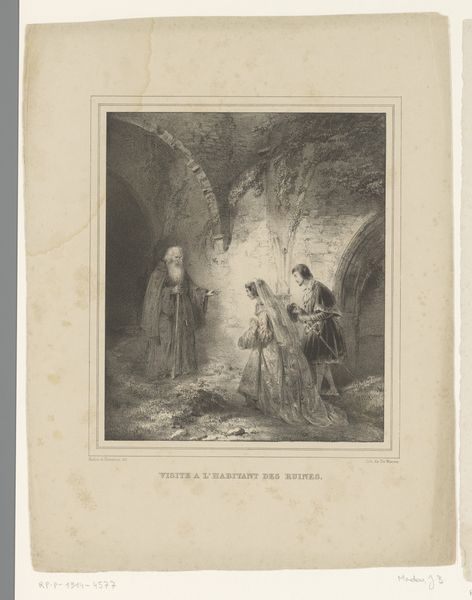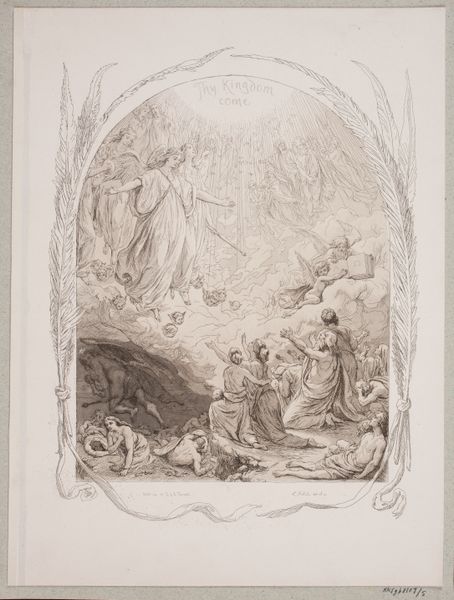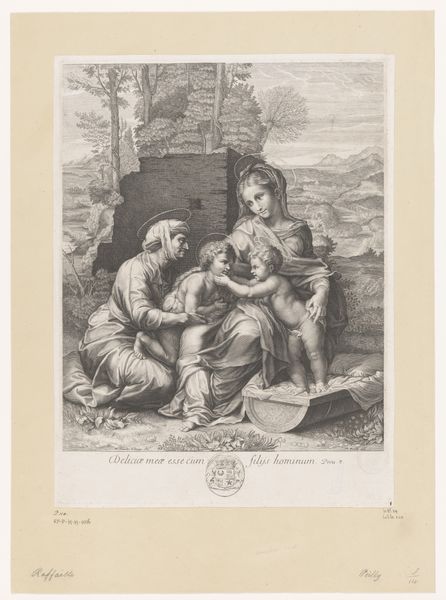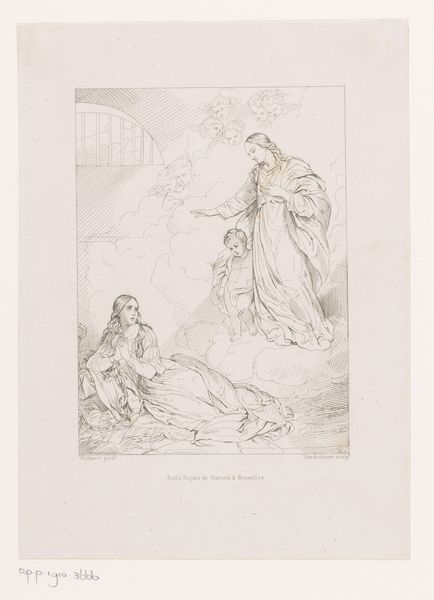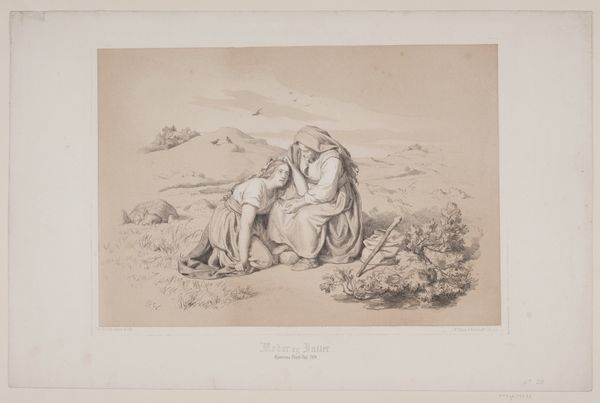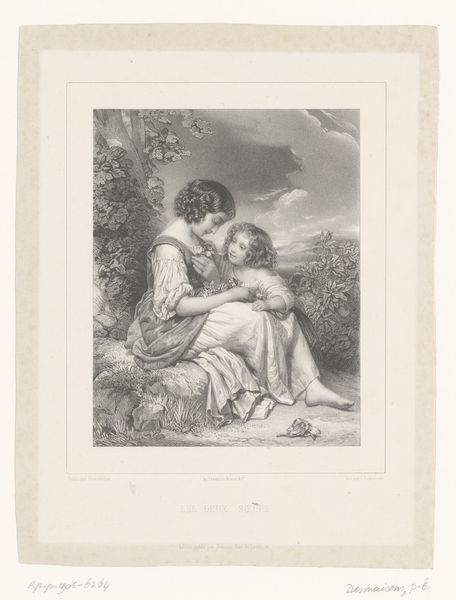
Dimensions: 354 mm (height) x 302 mm (width) (bladmaal)
Editor: This is "Illustration nr. 1 til "L`Amour et Psyché," created in 1862 by Lorenz Frølich. It appears to be an engraving or print depicting a scene within a cave, and there's a clear narrative element at play. The style feels very romantic. What are your thoughts when you see this work? Curator: What strikes me is how Frølich is engaging with Apuleius' classical text in a 19th-century context. Romanticism often looked back to the past, but not just to celebrate it. The "Amour et Psyché" story, rich in symbolism about love, loss, and redemption, might have resonated with the social and moral anxieties of the time. Considering this was produced as a print, do you think it was aimed at a specific audience or social class? Editor: Possibly a middle-class audience interested in literature and art? The print medium suggests a wider distribution than, say, an original painting. I am particularly interested in the ass (donkey) behind the women! Curator: Exactly. This alludes to Apuleius himself, turned into a donkey! It subtly critiques societal structures and class mobility via a story that involves humans becoming animals, gods interacting with mortals, thus prompting viewers to consider the roles of morality, power and status in their society. Does this emphasis change your perspective of the work? Editor: It does! The print becomes more than just an illustration; it’s a commentary. Now I can see how it could be seen as challenging societal norms. Curator: Precisely. It shows the socio-political possibilities of working with pre-existing imagery and tales. Frølich uses a familiar story to instigate discourse. Editor: Thank you. I wouldn't have seen that on my own, which just highlights how essential historical context is to our appreciation of art.
Comments
No comments
Be the first to comment and join the conversation on the ultimate creative platform.
